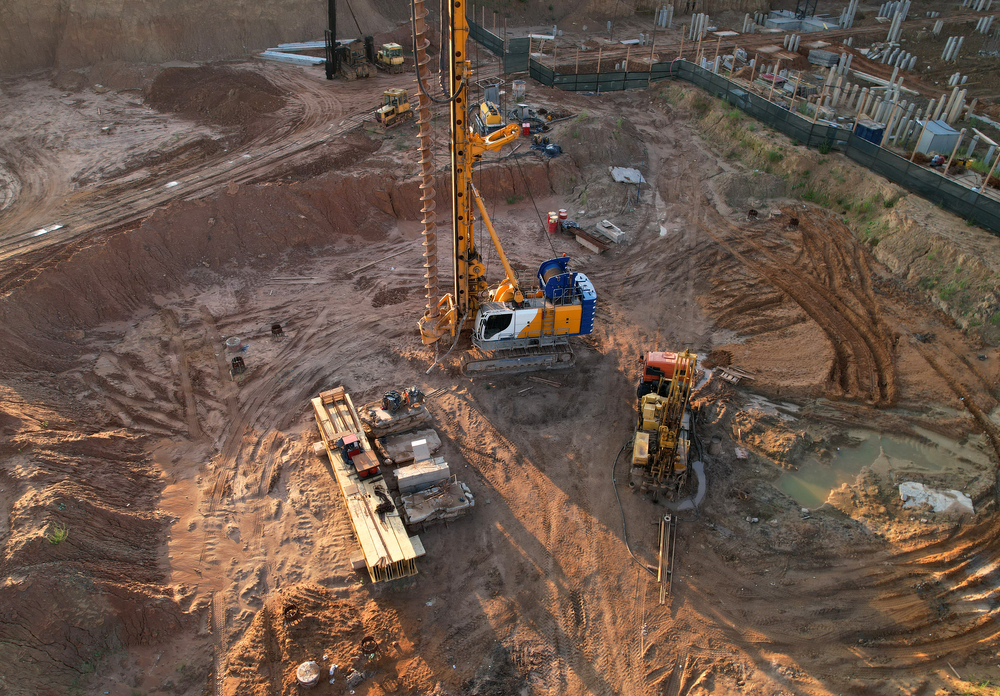The Basic Principles Of Geotheta
The Basic Principles Of Geotheta
Blog Article
See This Report about Geotheta
Table of ContentsThe Only Guide to GeothetaSome Known Details About Geotheta An Unbiased View of GeothetaThe 5-Second Trick For GeothetaGeotheta - Questions

They carry out website investigations, gather samples, carry out research laboratory examinations, and analyze data to examine the viability of the ground for construction projects - Tailings Engineer. Based on their searchings for, geotechnical designers give suggestions for structure layout, incline stability, maintaining frameworks, and reduction of geotechnical threats. They team up with various other specialists, such as architects, structural engineers, and building and construction groups, to ensure that geotechnical factors to consider are incorporated right into the total task layout and execution
By assessing the behavior and residential or commercial properties of dirt and rock, they can determine possible geotechnical hazards such as landslides, dirt settlement, or incline instability. Their know-how aids avoid failings or mishaps that can threaten lives and building. Here are some thorough responsibilities and responsibilities of a geotechnical engineer: Site Investigation: Geotechnical designers conduct site investigations to collect information on subsurface problems.
They interpret the data to comprehend the properties and actions of the soil and rock, including their strength, leaks in the structure, compaction attributes, and groundwater problems. Geotechnical Evaluation and Layout: Geotechnical engineers examine the information gathered throughout website examinations to evaluate the stability and suitability of the website for building and construction projects. They do geotechnical computations and modeling to review variables such as birthing capacity, settlement, incline stability, side earth pressures, and groundwater circulation.
Getting My Geotheta To Work
Structure Design: Geotechnical engineers play a vital role in designing structures that can securely sustain the designated structure. They assess the soil conditions and lots demands to determine the appropriate foundation type, such as shallow structures (e.g., grounds), deep structures (e.g (https://ameblo.jp/geotheta/entry-12862281966.html)., stacks), or specialized methods like dirt renovation. They think about factors such as negotiation limitations, bearing capability, and soil-structure communication to create optimal structure designs
They assess building plans, monitor site tasks, and carry out field inspections to validate that the style referrals are followed. If unanticipated geotechnical problems develop, they analyze the situation and give recommendations for remediation or changes to the layout. Threat Analysis and Mitigation: Geotechnical designers examine geotechnical dangers and threats related to the job website, such as landslides, liquefaction, or soil disintegration.

Partnership and Interaction: Geotechnical engineers function closely with other specialists entailed in a project, such as engineers, architectural designers, and building and construction teams. Efficient interaction and partnership are vital to integrate geotechnical considerations into the overall project design and building process. Geotechnical designers give technical know-how, solution questions, and make sure that geotechnical requirements are met.
Some Ideas on Geotheta You Need To Know
Here are some sorts of geotechnical designers: Structure Designer: Foundation designers specialize in making and evaluating foundations for frameworks. They examine the soil conditions, lots needs, and website features to identify one of the most ideal foundation kind and style, such as shallow foundations, deep foundations, or specialized techniques like pile structures.
They examine the aspects influencing incline security, such as soil buildings, groundwater problems, and incline geometry, and establish approaches to stop incline failings and reduce risks. Quake Engineer: Quake designers concentrate on examining and developing structures to stand up to seismic pressures. They analyze the seismic danger of a site, review soil liquefaction capacity, and establish seismic design requirements to ensure the safety and security and durability of structures throughout earthquakes.
They execute area testing, collect examples, and examine the collected information to identify the soil homes, geologic formations, and groundwater problems at a site. Geotechnical Instrumentation Designer: Geotechnical instrumentation designers concentrate on monitoring and measuring the behavior of dirt, rock, and frameworks. They mount and maintain instrumentation systems that keep an eye on aspects such as dirt negotiation, groundwater levels, incline motions, and architectural displacements to analyze performance and provide very early warnings of possible issues.
The Definitive Guide for Geotheta
They perform tests such pop over here as triaxial examinations, debt consolidation tests, straight shear examinations, and leaks in the structure tests to gather information for geotechnical evaluation and style. Geosynthetics Designer: Geosynthetics engineers concentrate on the style and application of geosynthetic products, such as geotextiles, geogrids, and geomembranes. They make use of these materials to improve dirt security, reinforce slopes, provide drainage services, and control disintegration.
They have a tendency to be investigatory people, which indicates they're intellectual, reflective, and curious. They are curious, methodical, logical, analytical, and sensible. Some of them are additionally social, implying they're kind, generous, cooperative, client, caring, useful, compassionate, skillful, and pleasant - Consulting Engineers.
In the office environment, geotechnical engineers use specialized software devices to perform calculations, develop designs, and evaluate information. They prepare reports, evaluation task requirements, connect with clients and group members, and coordinate job activities. The workplace setup offers a favorable atmosphere for study, evaluation, and collaboration with various other professionals involved in the task.
Not known Incorrect Statements About Geotheta
They frequently see project sites to conduct site examinations, examine geotechnical problems, and gather data for evaluation. These brows through involve traveling to various places, often in remote or tough surfaces. Geotechnical engineers may do dirt sampling, conduct examinations, and screen construction activities to make certain that the geotechnical facets of the task are being implemented appropriately.
Geotechnical designers likewise function in specialized geotechnical laboratories. Geotechnical research laboratory engineers function extensively in these atmospheres, taking care of testing tools, operating tools, and recording information.
Report this page